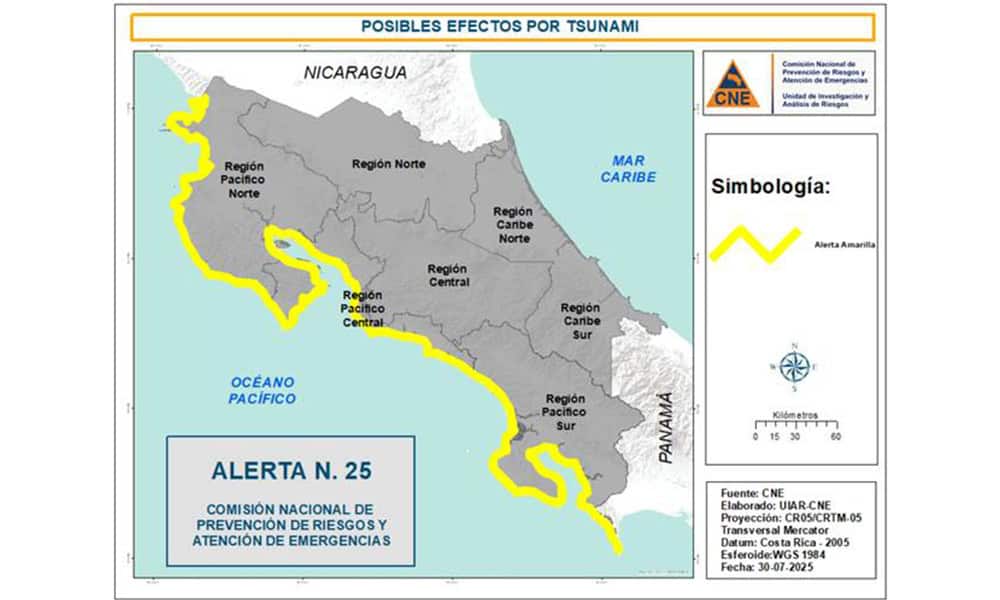The National Emergency Commission (CNE) has issued a public alert for Costa Rica’s Pacific coast, warning of dangerous ocean currents expected on Wednesday morning, triggered by a tsunami generated by a magnitude 8.8 earthquake off the eastern coast of Kamchatka, Russia.
While the tsunami does not pose a flooding threat to Costa Rica, the CNE and the National Tsunami Monitoring System (Sinamot) cautioned that strong and hazardous currents may affect the coastline starting at 7:50 a.m. on July 30.
“The CNE makes a special call to vessels and swimmers to follow preventive recommendations and suspend any activity in the sea during the risk period,” the agency said in a statement Tuesday night.
Sinamot, part of the Universidad Nacional, confirmed that its tsunami models align with forecasts from the Pacific Tsunami Warning Center (PTWC). Areas at risk include Cocos Island and the entire Pacific Slope, with wave activity expected between 7:12 a.m. and 7:49 a.m. Wednesday.
Oceanographer Silvia Chacón of Sinamot noted that Costa Rica is under a low-level tsunami alert, meaning no coastal flooding is expected, but rapid tide changes and powerful currents remain a concern for beachgoers and boaters.
“The danger can persist for many hours or more after the first wave,” warned the PTWC. “People caught in the water could drown, be struck by debris, or be pulled out to sea.”
The CNE has already notified Municipal Emergency Committees to activate preventive plans. Coastal residents and tourists are urged to suspend activities such as surfing, diving, artisanal fishing, and recreational boating until conditions normalize.
Tsunami Alert Levels in Costa Rica
Low: Dangerous currents and rapid tide changes. Avoid entering the ocean; suspend aquatic activities.
Medium: Risk of minor flooding. Evacuate beaches and low-lying areas (below 5 meters above sea level).
High: Risk of major flooding. Evacuate areas up to 20 meters above sea level; consider vertical evacuation in secure buildings.
The CNE emphasized that a tsunami involves a series of waves, not just one, and that the first wave may not be the strongest. The public is advised to stay informed through official communication channels in case conditions change.
Authorities are urging residents along Costa Rica’s coast to stay out of the ocean and suspend aquatic activities such as fishing, diving, surfing, and recreational boating as a precautionary measure due to the tsunami-related conditions.






